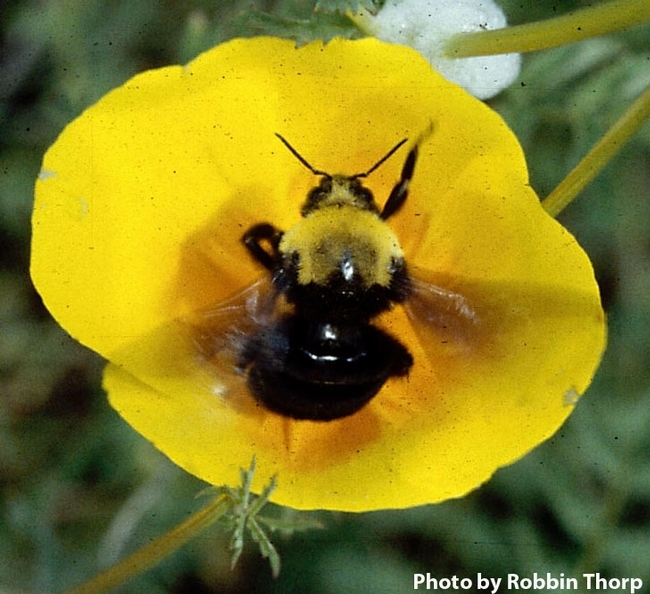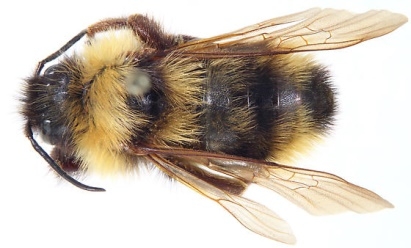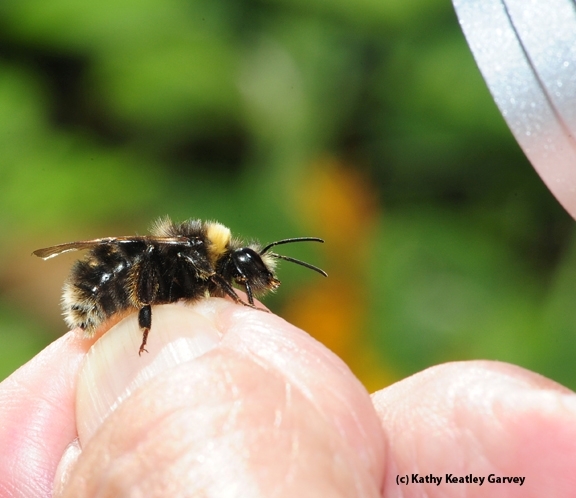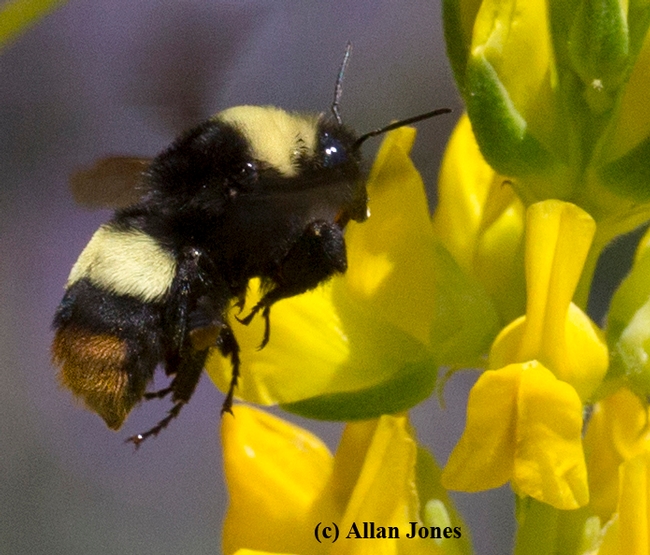
If you join the thousands of visitors at the ninth annual UC Davis Biodiversity Museum Day on Saturday, Feb. 15--a free public event showcasing 13 museums or collections--you might--might--see bumble bees (Bombus melanopygus and Bombus vosnesenskiii) in the UC Davis Arboretum or the Häagen-Dazs Honey Bee Haven, but not these four:
- Franklin's bumble bee, Bombus franklini
- Suckley cuckoo bumble bee, Bombus suckleyi
- Western bumble bee, Bombus occidentalis
- Crotch bumble bee, Bombus crotchi
These four subspecies ARE on campus, however. They're mounted specimens in the Bohart Museum of Entomology.
The California Fish and Game Commission voted 3-1 on June 12, 2019 to place these four bumble bees on the proposed endangered species list, as petitioned by the Xerces Society, Center for Food Safety, and Defenders of Wildlife.
But many agricultural interests don't want them listed as endangered species, according to a news story by Capital Public Radio's environmental reporter Ezra David Romero.
Pollination ecologist Neal Williams, professor of entomology, UC Davis Department of Entomology and Nematology was among those interviewed.

"Other points I made were that in addition to these species, there are others that appear to be declining, but might not yet be so rare. We need to look into these more carefully and work to safeguard their populations before they become so precipitously endangered. I also indicated that the biologies and historical distributions of these species are quite distinct and to me this suggests that we need to do more to understand mechanisms behind changes in their numbers. For example, contrast B. franklinii versus B. occidentalis, one that had a very restricted distribution the other that was so widely distributed."
The Xerces Society points out that "Bumble bees are important pollinators of wild flowering plants and agricultural crops. They are able to fly in cooler temperatures and lower light levels than many other bees, making them excellent pollinators—especially at higher elevations and latitudes. They also perform a behavior called 'buzz pollination,' in which the bee grabs the flower in her jaws and vibrates her wing muscles to dislodge pollen from the flower. Many plants, including a number of wildflowers and crops like tomatoes, peppers, and cranberries, benefit from buzz pollination.
The late Robbin Thorp 1933-2019), distinguished emeritus professor of entomology at the University of California, Davis, and a member of the Xerces Society, was one of the strongest proponents of protecting bumble bees. Thorp, a global authority on bees and co-author of Bumble Bees of North America: An Identification Guide and California Bees and Blooms: A Guide for Gardeners and Naturalists, honed in on Franklin's bumble bee, which once occupied one of the smallest ranges of bumble bees in the world. Its 13,300-acre range included Siskiyou and Trinity counties in California; and Jackson, Douglas and Josephine counties in Oregon. Today Franklin's bumble bee is feared extinct; Thorp last saw it in 2006.
Thorp hypothesized that the decline of the subgenus is linked to an exotic disease (or diseases) associated with the trafficking of commercially produced bumble bees for pollination of greenhouse tomatoes. Other threats may include pesticides, climate change and competition with nonnative bees.
If Franklin's bumble bee is given protective status, this could “stimulate research into the probable causes of its decline,” Thorp told us in an interview. “This may not only lead to its recovery, but also help us better understand environmental threats to pollinators and how to prevent them in future. This petition also serves as a wake-up call to the importance of pollinators and the need to provide protections from the various threats to the health of their populations.”
Meanwhile, be sure to attend the ninth annual UC Davis Biodiversity Museum Day on Saturday, Feb. 15, to explore the diversity of life. You'll learn about bees, hawks, carnivorous plants, Native American artifacts, wine, yeast cultures dinosaurs and more. Here's hoping that bumble bees don't go the way of the....dinosaurs. (See some of the UC Davis Biodiversity Museum Day highlights on Bug Squad)
Attached Images:

This is the Western bumble bee, Bombus occidentalis, one of four bumble bees on California's proposed endangered species list. (Photo by Kathy Keatley Garvey)

This is Crotch's bumble bee, Bombus crotchii, one of four bumble bees on California's proposed endangered species list. (Photo by Allan Jones, used with permission)